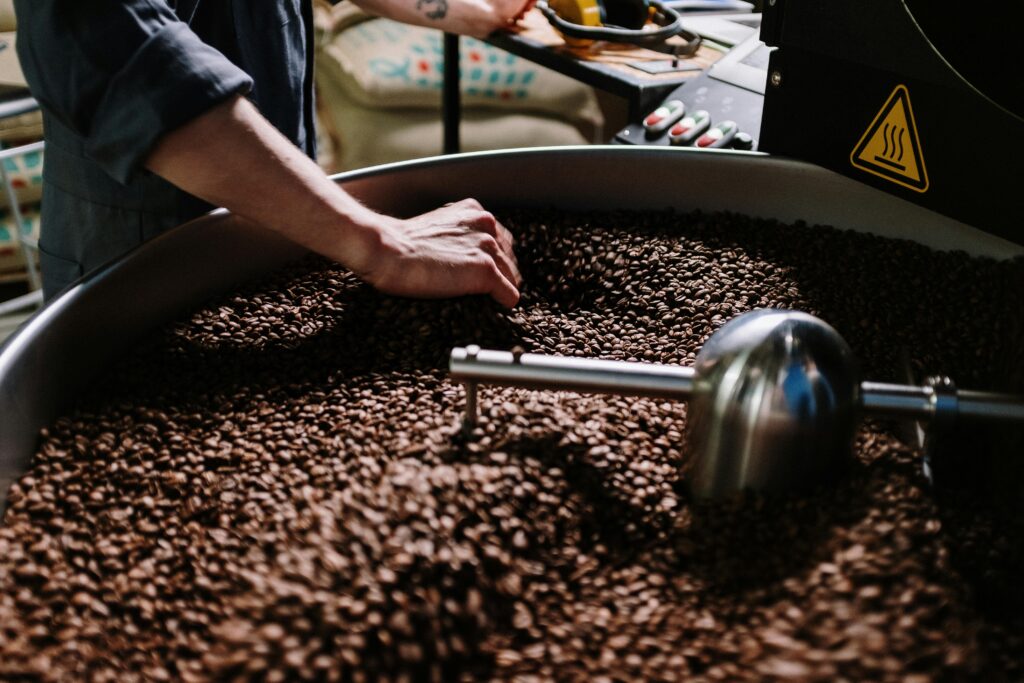What Are Espresso Beans And Coffee Beans?
In happyjourney of this guide, we will take you through the world of coffee. It is perfect for people who are curious about how their favorite drink comes to life. We will chase downwhere exactly the beans are grown、and how they are roasted. We’ll also talk about the people who work hard to bring that coffee to your cup, an dwhy it’s important for us all to think of sustainable. So whether you’re a newcomer to the world of coffee oran old hand at sipping it up, come with us to enjoy super delicious Espresso Beans And Coffee Beans!
Just like a real superhero after riding our ever morning routine it comes these coffee beans for your everyday helping of delicious caffeinated drink–coffee beans from the coffee plant ‘s fruit Coffee beans have their own genre, then It is different varieties Espresso bean, however, is special mixture varies greatly from unroasted bean to roasted and properly then ground for espresso machines. It lasts a lot longer than roasted unground types of coffee beans. It also has a taste that is stronger with more body to it The bottom line is whether you like your coffee as straightforward and dependable as Joe Smith himself, from which it got its name all those years ago; or a quick shot of concentrated espresso to keep you going fast for the day ahead–it ‘s these beans that make it all happen.

The Difference Between Espresso Beans And Coffee Beans
Espresso beans and coffee beans are like siblings but with two pretty different characters.Coffee beans are the laid-back sibling, ever-changing and available in many brands to enable making you that early morning cup of Java any time at all.Yet espresso beans, on the other hand, are the bold and upstanding sibling. Individually roasted for a short shot of espresso, they are stronger and darker–giving even more flavor in each sip.So although they come from the same family of coffee beans, each has its own important place in your coffee experience.
Types Of Espresso Beans And Coffee Beans
Espresso Beans
- Single-origin: This means that the beans come from a single place. It also means that they taste different from every other type of bean out there.
- Arabica: Both of these types of espresso beans are known for having a smooth taste. one has rich, deep flavors such as a berry; another.Do you understand what I mean?
We will use our strength to ensure that Robusta espresso beans are stronger and more bitter, whereas Arabica Caffeine Jolt tastes quite sweet in fact it has some chocolate-like overtones.
- Espresso Blends: These are mixtures of different beans, carefully crafted to create a specific flavor profile.
- Decaf: Those who prefer their espresso without the caffeine will be pleased to know that decaf beans are available.
Additionally, these beans originated in exceptional farms or regions. This is truly a premium espresso.
Coffee Beans
- Arabica Beans: Smooth and flavorful, with hints of fruit or nuts.
- Robusta Beans: Strong and bitter, with more caffeine.
- Liberica Beans: Unique fruity flavor, less common.
- Excelsa Beans: Complex and fruity, with a hint of spice.
- Typica Beans: Balanced and traditional, with mild acidity.
- Bourbon Beans: Sweet and caramel-like, grown at high altitudes.
Each type has its taste, so it’s fun to explore and find your favorite.

How To Choose The Right Beans For Your Taste Preference
Flavor Profiles: Consider the tastes that appeal to you. Do you prefer something smooth and mild, or bold and intense? Arabica beans often offer a sweeter, more nuanced flavor, while Robusta beans tend to be stronger and more bitter.
Exploring Origins: Beans sourced from various coffee-growing regions yield distinct flavor profiles. For example, beans from Central America may have fruity and floral notes, while beans from Indonesia might offer earthy and spicy flavors. Try beans from various origins to discover your favorites.
Roast Levels: Pay attention to the roast level of the beans. Lighter roasts often preserve the bean’s natural flavors and acidity, while darker roasts develop richer, smokier flavors. If you prefer a milder taste, opt for lighter roasts, whereas if you enjoy a bolder flavor, darker roasts may be more to your liking.
Freshness: Choose freshly roasted beans whenever possible. Freshly roasted beans retain more of their flavor and aroma compared to beans that have been sitting on the shelf for a long time. Look for beans with a roasted-on date to ensure freshness.
Grind Size: Consider how you plan to brew your coffee. Each brewing method demands a distinct grind size; for instance, a French press requires a coarse grind while espresso needs a fine one. Make sure to choose beans that are suitable for your preferred brewing method.
Read Reviews: Take advantage of online resources and reviews to learn about different bean varieties and brands. Hearing about others’ experiences can give you valuable insights into what to expect from different beans.
Trust Your Palate: Ultimately, the best way to find the right beans for your taste preference is to trust your palate. Experiment with different beans, brewing methods, and flavor profiles until you find the perfect combination that satisfies your coffee cravings.
By considering these factors and exploring different options, you’ll be well on your way to selecting the perfect beans to suit your unique taste preferences. Enjoy the journey of discovering new flavors and expanding your coffee palate.

Freshness is really important for espresso and coffee beans.
For coffee connoisseurs, freshness is a critical factor in the quality and flavor of Espresso Beans And Coffee Beans. Here ‘s why freshness makes a difference:
Flavor Retention: Freshly roasted beans keep more of the flavors and aromas they naturally possess, which means that if you are using old or canned coffee rather than fresh from a roaster it loses some of its vitality. As beans age, they start to fade in color and taste off or stale around the edges–achieving an overall blend. A distinctive signature.
Aroma Strength: We must not neglect the pleasures of sniffing freshly ground coffee. Fresh beans yield a higher proportion of aromatic compounds when ground into powder than old ones, so rising from this fine dust is corresondingly more delicious and welcoming aroma that enhances the entire experience of taking in your morning fix.
Adaptability: Freshly roasted beans contain a lot of carbon dioxide, which they liberate during the brewing process. This gas help producing the famous crema in espresso and their presence (along with flavors and all those lovely oils) from coffee grounds. Beans that are past their prime may lack an adequate amount of carbon dioxide, reducing crema and the effectiveness in extracting flavors from ground coffee.
Ideal Spectrum of Flavors: Coffee beans are most aromatic in their early days after roasting, then gradually fade over time. With fresh beans, one can experience the full range of flavor and complexities which a cup of coffee has to offer, from bright acidity through moderate sweetness.
More Control: The use of fresh beans during brewing will give bolder results and a wider range of flavor profiles. Freshly roasted beans are the perfect starting point for an exploration opportunity such as adjusting grind size to obtain proper extraction times adjusting both flavors on display– acidity vs sweetness and particular changes in flavor information.
Coffee-drinking Experience: Basically, it also affects the taste of the beans and so in turn contributes to the overall experience of coffee enjoyment. Fresh, high-quality beans make possible a cup that is vividly flavored, thoroughly enjoyable yet never forgettable. Whether one is drinking it at home or out in public places (such as an Italian-style espresso bar), this type has everything. The taste and appearance reflect something unforgettable in human history no matter where others have gone before them as long as they experience this one cupful for themselves before all competing systems collapse one by one into ranks of echo chambers comparing their endless sameness with ah–how different we two once looked together on either side during our trip around the world!
In summary, when it comes to espresso and coffee beans, freshness is key. It affects everything from the flavor and aroma of your coffee to how much crema you get and being in control over brewing process. By prioritizing freshness and seeking out freshly roasted beans, coffee lovers can take their coffee experience to a new level as they savor what really makes good coffee so memorable.
How To Properly Store Coffee And Espresso Beans
Storing espresso and coffee beans properly is easy with these tips:
Use an Airtight Container: Put your beans in a sealed container to keep them fresh and flavorful.
Keep Them Cool, Dark, and Dry: Store the container in a cool, dark place away from heat and moisture, like a pantry or cupboard.
Don’t Freeze or Refrigerate: Keep your beans at room temperature—freezing or refrigerating them can ruin their flavor.
Grind Only What You Need: Grind your beans just before brewing to keep them fresh longer.
Check the Roast Date: Try to use your beans within a few weeks of roasting for the best taste.
Keep Oxygen Out: Oxygen can make beans go stale faster, so store them in an airtight container to keep them fresh.
By following these simple steps, you can enjoy fresh, delicious coffee every time.

Grinding Espresso And Coffee Beans For The Perfect Cup
Espresso Beans: Espresso Bean GrindingWhile grinding espresso beans is easy if you use a burr grinder set to a fine consistency (think powdered sugar), it is also an essential step in making good coffee. Aim for around 18-20 grams of freshly ground coffee for a double shot of espresso.What is so special about a burr grinder? Well, it’s just better for your coffee. The minimum grind size leads to the least possible amount of “fines”-gaping pores that break open as espresso is poured over them. In between these extremes coarse grounds provide resistance against hot water and fizzing espresso. Its obvious grinding rule is: Don’t crush the grind too much. And don’t gate it too fine either! Yes, all that dead-plat shortening has mud in it
Coffee Beans: Coffee Bean GrindingIt is best to use a burr grinder if you have a knack for consistency, and adjust the grind size according to your method of coffee brewing (e.g. coarse-ground beans are best in a French press). Grinding the beans shortly before brewing will keep them fresh and flavorful, thus leading to a good cup of coffee.
Conclusion
After all, Espresso Beans And Coffee Beans are things that all coffee enthusiasts must understand.The differences between them, varities that exist and how to choose or store them properly are all things we’ve discussed.Freshness is important to retain flavor, and correctly grinding the beans means a delicious cup of coffee every time.Whether you’re a beginner or an expert, this advice will help you make the best of the great world that’s in coffee.
